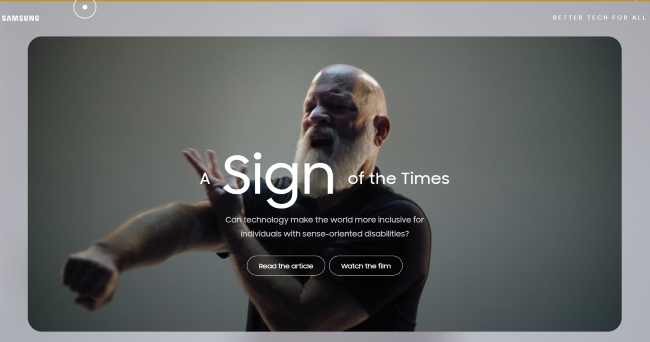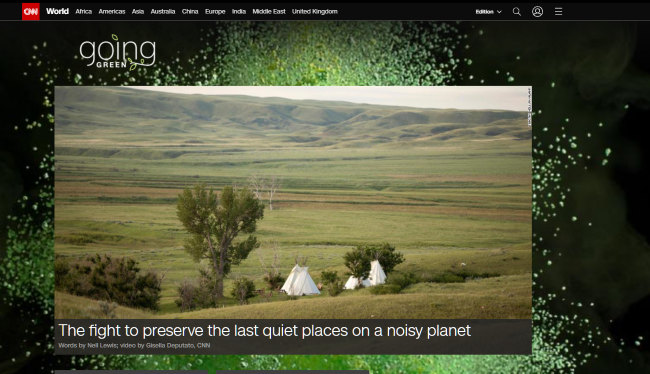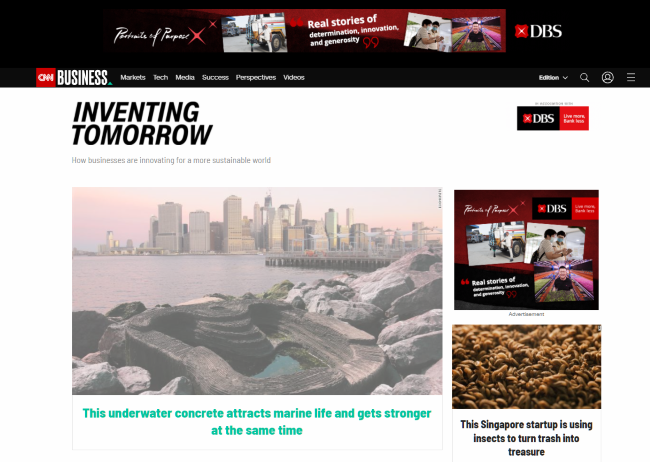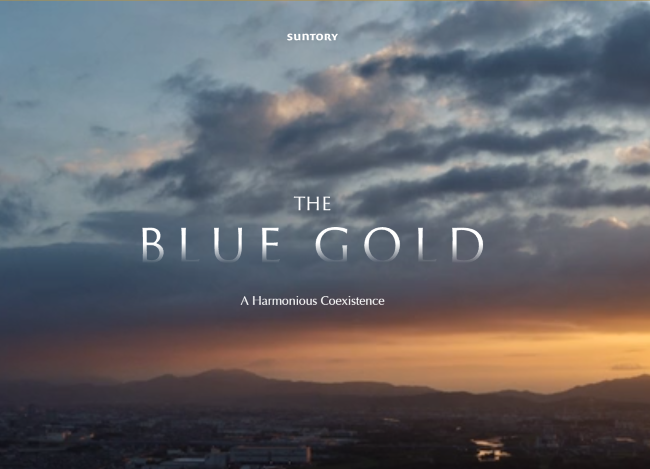
Walk the talk: Trust and sustainability
share on
Since its inception in 1980, CNN has built its reputation as a global media outlet known for its commitment to inform, engage and empower the world. The 41-year-old brand was one of the first 24-hour news channels, and a market leader when it came to pushing the envelope for innovation.
Today, CNN’s social media reach is one of the largest in the world for news brands, with more than 170 million followers across its main Facebook, Instagram, Twitter and YouTube accounts. On the commercial side, CNN has also been one of the fastest evolving media brands embracing the world of DSPs, programmatic and putting data at the heart of its commercial strategy.
In collaboration with CNN, MARKETING-INTERACTIVE speaks to Rob Bradley, senior vice-president of advertising sales for Asia Pacific and Latin America, about the evolution of the commercial team at the CNN brand.
Bradley, who has been with the company for more than six years, and in the media industry for well over 20, runs the digital data development for the organisation – a role he took on last year. He says the meteoric rise of data and technology has caused a monumental shift in many media organisations, including CNN.
“Yes, CNN is still TV, but we are now also a data company, a research company, a creative agency and a media buying company. We are all of these things now. If you look at who we are today, we’re a truly multi-platform, modern media company,” Bradley says.
Thinking back to the early years of innovation, Bradley adds the first big innovation for the brand was, in fact, the 24-hour news channel. “And if you look at that 24-hour news cycle today, that’s the most normal thing you can think of.”
Never one to rest on its laurels, and take its market position for granted, he adds:
We’ve never stopped innovating, which is why we’re still the market leader, and still so incredibly loved around the world. We meet audiences where they are and give them the content that they want.
On average, CNN Digital has seen more than 185 million unique monthly users in 2021, showing its power as a destination that people continue to turn to, and, as Bradley says, makes it one of the “truly last home pages in the world”.
Candidly, he expresses: “People still type CNN into the URL.” This, according to Bradley, is not just by accident, but rather by design given how heavily the company invests in digital and technology. So what does the change in technology mean from a media sales perspective, we ask him.
“An audience-first strategy,” he replies. While that may sound fairly simple, it is much harder to put the words into action. “If you can look through absolutely everything you do through an audience-first lens, then [your offering] becomes incredibly powerful.”
This is where data plays a crucial role. Currently, CNN has a central audience and data function, which Bradley manages. The team runs in parallel to its business operations and the advertising technology unit to aid in the democratisation of data to arm CNN’s teams to better understand audiences. This is then layered with a revenue strategy team which works with the sales team to help it create products – be it content, ads, research or business intelligence that will drive the best results for clients.
“All that mattered in the past was hunting down clients with a good pitch and a good brand. But that’s not enough anymore. Salespeople have to be data experts and digital experts.”
Moreover, CNN also ensures it has experts around the world in its numerous offices to help upskill its teams to be proficient with data.
Meanwhile, CNN AIM, which stands for “Audience Insight Measurement”, uses next-gen audience targeting to identify and reach specific audience segments through a range of sophisticated contextual targeting and semantics tools, first party data, and data partnerships, that maintain high levels of privacy and regulatory compliance.
What CNN AIM does is to humanise data using the Sentiment Analysis Moderator (SAM), which is a brand safety and suitability tool, which intelligently analyses the context of sentences (across text, audio, video, and galleries), using neurolinguistic AI to cleverly determine when content is brand-suitable.
This ensures advertising is adjacent to the most appropriate content, and avoids appearing alongside anything that may not strike the right tone.
SAM is used in tandem with CNN’s internal content classification tool, Content Engagement Platform (CEP), which tags content using IAB taxonomy in line with industry standards. Alongside the tech, editors classify and tag content in the content management system as it is published.
With all three elements – SAM, CEP and manual tagging – CNN is able to utilise positive targeting (and move away from broad block lists) and actively match brands with content that reflects their values, and which will resonate with their target audience.
Once teams have identified the ideal, brand-suitable environment, the AIM tool enables precise audience targeting, taking into account key behaviours and other information.
“We don’t just talk about data sets. We talk about people, because that’s what they are ultimately, so the humanising of data, and having a very clear brand narrative.”
Powering through COVID-19
As with most companies, last year was a particularly challenging one for CNN. One of its key sectors was around travel and tourism, which saw a dramatic cut back in advertising spend from brands.
Undeterred, CNN decided to pivot its attention to the finance, tech and business segments to ride the wave of conversations and concerns happening on the ground. To understand this evolving space better, the commercial teams held workshops and trained on how to work with different clients, be it in the B2B or B2C space.
Given its large audience demographic consisted of C-level executives across industries, CNN found itself in a comfortable position to help brands reach and engage with key decision makers.
“If you are a B2B technology company, you now need to influence sales leaders, marketing leaders, the CTO, the CFO, and all the various stakeholders. At CNN, we can reach all of these different people because of the scale we have, and we reach professionals across a number of different sectors and job titles.”
One such partnership CNN embarked on was with Samsung Electronics (Samsung) for an advertising campaign that highlighted the power of technology to build a better future, and help people overcome challenges through tech innovations.
The campaign included “Better Tech For All”, a branded content series produced by CNN’s award-winning global brand studio Create, which showcased remarkable innovations that allow people to thrive and overcome challenges through technology. In addition, the editorial sponsored series, “Tech for Good”, launched for the second year in a row, in partnership with Samsung.

Hosted by CNN anchor and correspondent Kristie Lu Stout, the second season of “Tech for Good” launched in July this year and consisted of four 30-minute episodes airing until November 2021 across CNN International TV, with extra content on digital and social platforms. It explores how technology is helping people and the wider society in everything from education to sustainability.
Bradley says all of these shifts and quick pivots saw the team in APAC have a “remarkable year” with 15% growth when it came to revenue. He adds that APAC, particularly, is a region that needed an incredibly defined strategy and approach to go to market with.
“We marry data with creativity, and storytelling. We do not go to market talking about advertising. We understand our audiences better than anyone,” he says.
“We have our in-house creative agency working closely with brands, and then we have our sponsored content unit focusing on brand alignment. So marrying this beautiful trusted content with data-driven understanding is really the key to delivering strategic content for our clients’ audiences.”
At the moment, we are very well-positioned to help brands tell their stories in a very clear way with a defined strategy, and it’s paying dividends.
Ensuring trust
According to Bradley, brands today want to tell their story more than ever before. At the same time, consumers are also demanding brands stand for something purposeful which they can align to.
“If you look at what CNN stands for, and how we work, we’re really a brand built on trust. We’re built on fact, science, data, and everything we do is incredibly well-researched. So, in a world where brands want to tell the world what they stand for in an authentic way, CNN is the perfect platform to enable them to do that.”
In fact, CNN undertook a bespoke brand perception study in 2021 that illustrated its trustworthiness. The results saw its reliability score was 4.6 times higher than the average of other international news and social media brands.
Among those who choose CNN as their preferred news brand, audiences turned to the media brand to understand what is going on in the world today (94%), and to provide them with a depth of analysis and content they can’t get anywhere else (81%). Meanwhile, 80% of them also tuned into CNN as the brand created content which was relevant to them, and was important to them personally (77%).
Data also showed that CNN had a significant increase in audience and engagement during the pandemic as people sought fact-based news and information they could trust. As such, a sense of trustworthiness in the media, and across the board, matters more than ever in the current climate – and this isn’t something CNN’s commercial team takes lightly.
In fact, the team takes a strong stand against brands simply paying lip service to causes to get into the good books of consumers. Bradley shares that at CNN, clients also need to meet an incredibly strict set of standards and practices.
We’ve got that data and insight to understand that our audiences believe in trust, and we will consult with our clients to understand what they are really doing.
He adds that most of the relationships CNN has with clients are long-standing and, as such, CNN’s commercial team is invested in ensuring the trust of its brand is not compromised.
For example, Kirloskar entered its 13th consecutive year of partnership with CNN, given its success of the “Going Green” series, to engage audiences around the world in a more sustainable future. This long-standing partnership is focused on Kirloskar being the exclusive sponsor of Going Green as part of a long-term campaign designed at reaching global audiences, particularly business decision-makers.

Over the years, the Going Green campaign has reached influential audiences across the globe, including 500 million-plus environmentally conscious viewers, and over 250 million business decision-makers, to raise worldwide awareness around green innovations.
The 2021 advertising campaign includes Kirloskar’s sponsorship of two Going Green shows that explore green technology solutions for a sustainable future, and a range of digital content focused on the green agenda.
Commenting on the partnerships, Bradley says: “We don’t just come up with some package and hand it to our clients. There is a long consultative process to come out with what’s right for them, and how we can guide them based off insights of what our audiences want as well.”
What kind of content is picking up?
In recent times, CNN has pivoted its content to cover the environment, sustainability, and conservation. In 2020, CNN saw a large number of audiences engaging with sustainability-related content on its digital platforms, and sustainability stories saw higher engagement rates compared with other topics.
The brand found that while climate change, recycling, and pollution, remain key topics in this area, there was also a massive shift in interest towards more interim topics such as sustainable businesses, sustainable eating, and reducing waste.
An analysis by the company revealed that nearly three-quarters of CNN’s audiences value companies that behave more sustainably, but they want to see that it’s more than skin deep.
Moreover, audiences want to align themselves with organisations that care about ESG (environmental, corporate and social governance) and social events. In fact, 80% of CNN’s audiences believe that ESG policies are an effective tool to enhance company reputation, and 77% of them agree that brands should be doing more to address environmental issues.
Seeing the power of CNN’s connected audience base, and its passion for sustainability-related conversations, global bank DBS joined forces with CNN for an advertising and sponsorship campaign that focuses on sustainability and innovation for a second consecutive year.
The cross-platform campaign includes DBS being the exclusive sponsor of two half-hour “Inventing Tomorrow” shows hosted by Stout. The programme highlights the innovative steps that entrepreneurs and businesses are taking to change the way we live during this time of unprecedented change.
DBS is also the exclusive sponsor of a range of digital content relating to “Inventing Tomorrow”. In addition, a branded content series, “Portraits of Purpose”, which comprises seven films, is being produced by CNN’s global brand studio Create.


Meanwhile, Suntory, a global leader in packaged groups, has been partnering with CNN for its sustainability campaign since 2019. The brand has seen an increase in awareness of its sustainability initiatives, and its image as a socially responsible company, with a focus on water preservation.
The campaign it created with CNN included “The Blue Gold” native ad page, which was produced by CNN Create, to increase knowledge about the complexities of the challenges, and Suntory’s strategies to optimise water regeneration.
Create also produced a branded content film featuring seven-time Pulitzer grant recipient, photographer and filmmaker, Sean Gallagher, and his perspective on telling stories about global water-related climate issues.

“CNN trades on trust, and provides information to the world to help them make decisions. We drive conversations, and we have an incredibly powerful audience that truly believes in driving change in the world for the better,” Bradley says.
People need information that they can trust. The standard and practices we have, the rigour that any content goes through before it is published digitally or pushed down to social or aired on television, is incredibly detailed and vital to the organisation.
“And that remains whether it’s in branded content that’s from our creator unit, or in sponsored content that brands align their messaging with. We have this process that we go through where content still needs to meet our standards and practices of what we put on the CNN brand.”
This article was created by MARKETING-INTERACTIVE in collaboration with CNN.
share on
Free newsletter
Get the daily lowdown on Asia's top marketing stories.
We break down the big and messy topics of the day so you're updated on the most important developments in Asia's marketing development – for free.
subscribe now open in new window
